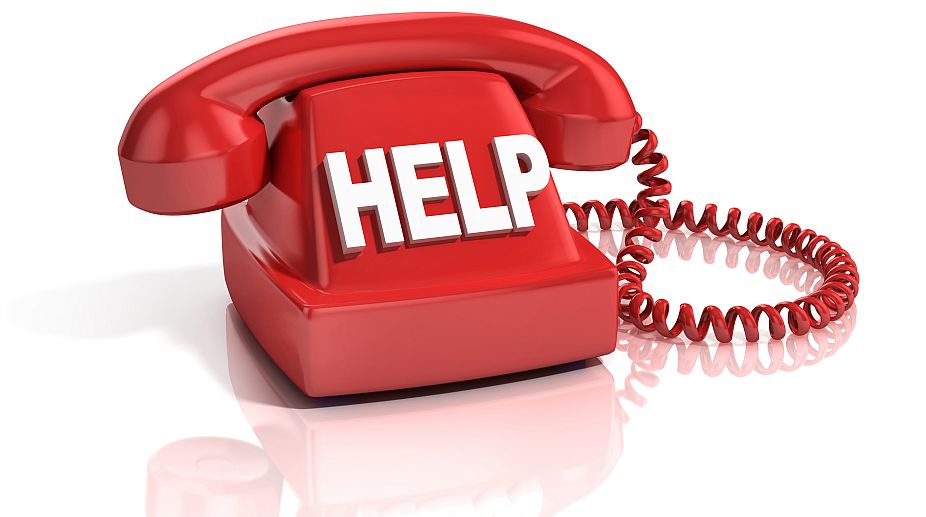UK sanctions Iran’s leading military figures, entities
The UK has announced sanctions on a further seven individuals and six entities who it said "enabled Iran to conduct destabilizing regional activity, including its direct attack on Israel".

Representational Image (PHOTO: Getty Images)
The world's oldest emergency helpline 999 on Sunday completed 80 years of its existence in the UK with Scotland Yard celebrating the "cornerstone" of the British policing by organising several events.
In the early days of the 1930s, just 24 staff in the old Victoria Embankment headquarters of the Metropolitan Police dealt with a couple of hundred calls a day.
It was launched after a major fire in London in 1935 resulted in five fatalities. A committee was set up to look at how telephone operators could identify emergency calls.
Advertisement
Now, there are three centralised communication complexes in Bow, Hendon and Lambeth, employing over 2,000 people dealing with 13,000 to 20,000 calls per day.
Met Police Chief Superintendent David Jackson, head of the Met Central Communications (CC) said, "The 999 system is the cornerstone not only of British policing but also for our emergency service partners".
"The level of accessibility that it provides allows emergency services to save lives and protect the public.
"Our dedicated staff operate 24 hours a day, 365 days a year ensuring that police can be dispatched quickly to incidents where the public need us," he said.
Being there 24/7 and ensuring that officers are dispatched quickly to emergency and priority incidents is a critical function for the police, Jackson said.
"The progress since 1937 has been enormous – and we will keep striving to improve the service over the next 80 years," he said.
In 1937, the first ever emergency number system anywhere in the world came into being in London with the introduction of the 999 call — marking an unprecedented change in the way the public communicated with the Metropolitan Police.
In July last year, Met CC launched its live twitter feed @MetCC from one of the three central communications complexes where first contact operators were answering tens of thousands of emergency calls every week.
@MetCC has had more than 350,800 posts submitted since its launch, 7,600 of which required a response from police.
The Met has posted 8.4 million tweets/broadcasts since the feed began.
As part of events to mark the anniversary of the 999 number, a special commemorative section has been set up on the Met's Facebook page featuring video interviews with 999 operators, a wide range of photos, illustrations and facts and figures relating to the history of the service.
The feed will include photos relating to emergency communication that chart the significant developments in the service between 1937, when a handful of officers used counters on large table maps to denote police cars and messages were transmitted by Morse code, and the present day's sophisticated high-tech command centres.
The system has been upgraded and redesigned numerous times over the decades, leading to the sophisticated multi- screen automated service in use today that prioritises 999 calls using interactive satellite mapping as well as access to translators in 170 languages and special text phone numbers for the deaf.
The Met Police said it has always made use of new technology to help them fight crime – the first case of a criminal being arrested through use of telegrams was recorded in 1845, while in 1910 the notorious murderer Dr Crippen was famously caught after telegrams between London, Canada and a ship in the Atlantic were sent.
In the years after the introduction of wireless in cars in 1922, it was felt a control centre was needed to direct these 'eyes and ears' and feed them with information, but it was not until 12 years later in 1934 that the first 'Information Room' (IR) was set up at Scotland Yard's old headquarters in Victoria Embankment.
The Met wanted all calls routed to the Information Room because local police stations often only had a single line which would be engaged when an emergency call was being made.
The public could ring the operator and ask for the Scotland Yard switchboard – the 'Whitehall 1212' number famous from many old films – and then be connected straight through to the IR.
The government had been advising the public since 1927 to dial 0 and ask the operator for police, fire, ambulance which ensured that interrupted calls could be traced.
But the impetus for a new, dedicated emergency number came from a tragic event in 1935 when five women lost their lives in a fire at a Wimpole Street doctor's house in London.
Neighbours dialling 0 to alert the operator to the blaze found it jammed – at that time the automatic exchanges had no way to distinguish between "life or death" calls and all the others coming into their switchboards – highlighting the need for urgent reform of the system.
Advertisement